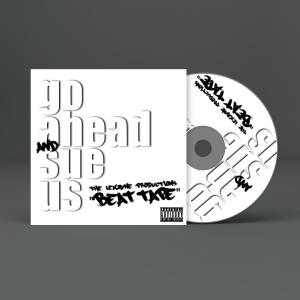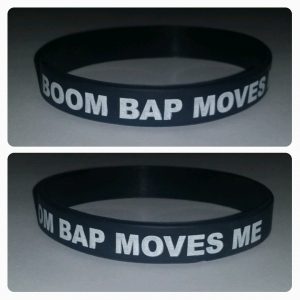A Tribute To The Hip Hop King Of New York, Notorious B.I.G.

Big is celebrated as one of the greatest rap artists and is described by Allmusic as “the savior of East Coast hip-hop”. The Source and Blender named Big the greatest rapper of all time. In 2003, when XXL magazine asked several hip hop artists to list their five favorite MCs, Big’s name appeared on more rappers’ lists than anyone else. In 2006, he was ranked at #3 in MTV’s The Greatest MC’s of All Time.
Since his death, Big’s lyrics have been sampled and quoted by a variety of hip hop, R&B and pop artists including Jay-Z, 50 Cent, Alicia Keys, Fat Joe, Nelly, Ja Rule, Eminem, Lil Wayne, Game, Clinton Sparks, Michael Jackson and Usher. On August 28, 2005, at the 2005 MTV Video Music Awards, Sean Combs (then using the rap alias “P. Diddy”) and Snoop Dogg paid tribute to Big: an orchestra played while the vocals from “Juicy” and “Warning” played on the arena speakers. In September 2005, VH1 had its second annual “Hip Hop Honors”, with a tribute to Big headlining the show.
[yframe url=’http://www.youtube.com/watch?v=N1_F_PtBH2Y’]
Big had begun to promote a clothing line called Brooklyn Mint, which was to produce plus-sized clothing but fell dormant after he died. In 2004, his managers, Mark Pitts and Wayne Barrow, launched the clothing line, with help from Jay-Z, selling T-shirts with images of Big on them. A portion of the proceeds go to the Christopher Big Foundation and to Jay-Z’s Shawn Carter Scholarship Foundation. In 2005, Voletta Big hired branding and licensing agency Wicked Cow Entertainment to guide the Estate’s licensing efforts. Big-branded products on the market include action figures, blankets, and cell phone content.
The Christopher Big Memorial Foundation holds an annual black-tie dinner (“B.I.G. Night Out”) to raise funds for children’s school equipment and supplies and to honor the memory of the late rapper. For this particular event, because it is a children’s schools’ charity, “B.I.G.” is also said to stand for “Books Instead of Guns”.
Big mostly rapped on his songs in a deep tone described by Rolling Stone as a “thick, jaunty grumble”, which went deeper on Life After Death. He was often accompanied on songs with ad libs from Sean “Puffy” Combs. On The Source’s Unsigned Hype, they described his style as “cool, nasal, and filtered, to bless his own material”.
[yframe url=’http://www.youtube.com/embed/RvYnBjKizyE’]
Allmusic describe Big as having “a loose, easy flow” with “a talent for piling multiple rhymes on top of one another in quick succession”. Time magazine wrote Big rapped with an ability to “make multi-syllabic rhymes sound… smooth”, while Krims describes Big’s rhythmic style as “effusive”. Before starting a verse, Big sometimes used onomatopoeic vocables to “warm up” (for example “uhhh” at the beginning of “Hypnotize” and “Big Poppa” and “whaat” after certain rhymes in songs such as “My Downfall”).
[yframe url=’http://www.youtube.com/watch?v=32vdp3T5MGA’]
Lateef of Latyrx notes that Big had, “intense and complex flows”, Fredro Starr of Onyx says, “Biggie was a master of the flow”, and Bishop Lamont states that Big mastered “all the hemispheres of the music”. “Notorious B.I.G. also often used the single-line rhyme scheme to add variety and interest to his flow”. Big Daddy Kane suggests that Big didn’t need a large vocabulary to impress listeners – “he just put his words together a slick way and it worked real good for him”. Big was known to compose lyrics in his head, rather than write them down on paper, in a similar way to Jay-Z.
Big would occasionally vary from his usual style. On “Playa Hater” from his second album, he sang in a slow-falsetto. On his collaboration with Bone Thugs-n-Harmony, “Notorious Thugs”, he modified his style to match the rapid rhyme flow of the group.
Big’s lyrical topics and themes included mafioso tales (“Niggas Bleed”), his drug dealing past (“10 Crack Commandments”), materialistic bragging (“Hypnotize”), as well as humor (“Just Playing (Dreams)”), and romance (“Me & My Bitch”). Rolling Stone named Big in 2004 as “one of the few young male songwriters in any pop style writing credible love songs”.
Guerilla Black, in the book How to Rap, describes how Big was able to both “glorify the upper echelon” and “[make] you feel his struggle”. According to Touré of the New York Times in 1994, Big’s lyrics “[mixed] autobiographical details about crime and violence with emotional honesty”. Marriott of the New York Times (in 1997) believed his lyrics were not strictly autobiographical and wrote he “had a knack for exaggeration that increased sales”. Big described his debut as “a big pie, with each slice indicating a different point in my life involving bitches and niggaz… from the beginning to the end”.
Ready to Die is described by Rolling Stone as a contrast of “bleak” street visions and being “full of high-spirited fun, bringing the pleasure principle back to hip-hop”. Allmusic write of “a sense of doom” in some of his songs and the NY Times note some being “laced with paranoia”; Big described himself as feeling “broke and depressed” when he made his debut.The final song on the album, “Suicidal Thoughts”, featured Big contemplating suicide and concluded with him committing the act.
[yframe url=’http://www.youtube.com/watch?v=gKsFdWsZnT4′]
On Life After Death, Big’s lyrics went “deeper”. Krims explains how upbeat, dance-oriented tracks (which featured less heavily on his debut) alternate with “reality rap” songs on the record and suggests that he was “going pimp” through some of the lyrical topics of the former. XXL magazine wrote that Big “revamped his image” through the portrayal of himself between the albums, going from “midlevel hustler” on his debut to “drug lord”.
[yframe url=’http://www.youtube.com/watch?v=l4w6q0cxdpU’]
Allmusic wrote that the success of Ready to Die is “mostly due to Big’s skill as a storyteller”; In 1994, Rolling Stone described Big’s ability in this technique as painting “a sonic picture so vibrant that you’re transported right to the scene”. On Life After Death Big notably demonstrated this skill on “I Got a Story to Tell” telling a story as a rap for the first half of the song and then as a story “for his boys” in conversation form.
[yframe url=’http://www.youtube.com/watch?v=cyXUlnX3zLE’]
Leave a comment below and let us know how you felt about B.I.G.
Related posts:
Cart
Products
-
 Go Ahead And Sue Us - Beat Tape (Tester)
Go Ahead And Sue Us - Beat Tape (Tester)
$5.00$0.00 -
 Go Ahead And Sue Us - Beat Tape
Go Ahead And Sue Us - Beat Tape
$5.00$0.00 -
 Silicone Wristband
$2.00
Silicone Wristband
$2.00
-

